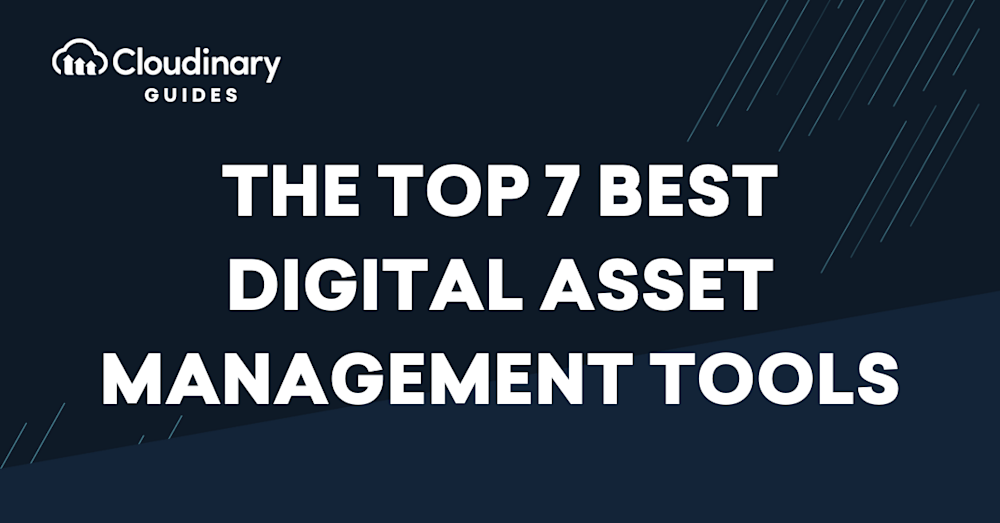Do you find yourself wasting hours searching for digital assets? Digital asset management tools can help solve this problem by allowing you to easily store, manage, and organize different types of assets. DAM tools offer a range of benefits, including content velocity, improved collaboration, and reduced costs.
With the right DAM, you can easily find and repurpose existing digital assets rather than create new ones from scratch, saving time and resources. Collaboration is also made easier, as team members can access and work on the same files in real-time, regardless of location. Moreover, with the ability to set permissions and access controls, you can ensure that only authorized individuals can access sensitive information.
Additionally, when selecting a DAM system, it’s essential to evaluate its compatibility with your current workflows and systems, ensure scalability for future needs, and assess critical features like robust search capabilities, metadata management, and security measures. Considering factors such as mobile access and vendor reputation can further streamline your decision-making process.
In this article, we’ll explore the top 7 DAM tools and their benefits so that you can choose the right one for your business needs.
What is a Digital Asset Management Tool?
A DAM system is a software tool that allows you to create metadata around your content so that it’s searchable by multiple criteria (e.g., keyword, date created), add custom fields so you can track additional information about each piece of content (e.g., author name), and share links within your organization or outside of it. These digital asset management systems offer a slew of benefits, including the ability to create and manage websites, apps, and digital experiences, collaborate on projects, and share content across teams.
To maximize the value of a DAM system, organizations should also assess how well the platform supports their specific workflows, integrates with existing tools like CRM or CMS, and enables mobile accessibility for teams on the go.
What Types of Digital Asset Management (DAM) Software Exist?
- Brand Asset Management (BAM) – This software is a component of DAM that’s all about handling specific assets related to a company’s brand. These can include things such as company logos, images, and marketing materials. The intent is to ensure brand assets are managed effectively and utilized consistently across a company.
- Production Asset Management (PAM) – This software comes into play primarily in the life cycle of media files. PAM oversees the production and editing process of such assets. It’s useful in managing assets that change regularly, particularly in sectors like film production, video games, and animation.
- Library Asset Management (LAM) – LAM is tuned towards managing a vast array of digital assets that don’t change on a frequent basis. Its role is to make sure these assets are stored, organized, and can be retrieved efficiently.
When choosing a DAM system, consider whether its support for specific asset types (e.g., images, videos, documents) aligns with your organization’s needs. For example, BAM might suit brand-heavy organizations, while PAM may be ideal for industries requiring frequent updates to assets.
What are the Benefits of Digital Asset Management Software?
- Elimination of cost of lost or misplaced work – Digital Asset Management software can save significant amounts of money that might otherwise be wasted on recreating misplaced or lost work. The software allows for secure and organized storage of media files which makes them much easier to locate. Furthermore, DAM systems save all versions of an asset, so it is possible to revert to earlier versions in case a recent change was incorrect or undesirable.
- Reduction of workflow redundancies – DAM software helps streamline work processes by providing a holistic view of all the company’s assets. This clear visibility makes it easier to reuse and repurpose assets, thereby eliminating unnecessary duplications of work. The central repository provided by the DAM system facilitates cross-team collaboration, enhancing productivity by reducing the miscommunication that could arise from disparate storage locations.
- Maintain Brand Consistency – DAM software helps uphold the brand’s consistency by ensuring that the correct, latest versions of the media files are available for all to use. The version control functionality directs everyone to a single content repository, which prevents the use of outdated or incorrect versions of assets. This consistent use of the correct assets boosts the company’s brand and enhances the customer experience at each interaction point.
- Improved Security and Compliance: DAM systems often include advanced security features, such as encryption, granular permissions, and compliance with industry regulations (e.g., GDPR or HIPAA). This ensures sensitive assets are protected and access is restricted to authorized users.
- Scalability and Flexibility: A good DAM system can grow with your organization, supporting an expanding volume of assets, users, and integrations as your needs evolve.
What To Look For in a Digital Asset Management Tool
When choosing a system, several factors must be considered to ensure it meets your organization’s specific needs. Here are some key things to look for:
- Accessible Interface. A DAM system should be easy to navigate and use, with a simple and intuitive interface that lets you quickly find and manage assets.
- Intelligent Automation. Automation is a powerful tool for any team, with some DAM systems that can learn from your existing assets to auto-tag content, generate new versions of your assets, or perform edits like cropping and image optimization.
- Customizable Metadata. Adding custom metadata fields to assets is essential for organizing and searching for assets. Make sure the DAM system allows for customizable metadata fields that suit your organization’s unique requirements.
- Integration Capabilities. The DAM system should integrate with other tools and software used by your organization. This means it should have a well-documented API, support for multiple programming languages, and offer integrations via SDKs.
- Robust Search Functionality. The ability to quickly search for and find assets is critical in a DAM system. Look for a system that offers advanced search capabilities, including full-text search, faceted search, visual searching, similarity search, and filtering options.
- Security and Permissions. A DAM system should provide robust security features to ensure that only authorized users can access, download, and edit assets. It should also allow granular permissions such as SSO and LDAP so it can scale with your teams as they grow while remaining secure.
- Scalability. A sound DAM system should be able to grow with your organization’s needs, allowing you to add more assets, users, and functionality as needed. This might include features like add-ons that can be activated as your team grows, or options for integrations with other services, so you don’t need to start from scratch with a new tool every few years.
- Mobile Access. Ensure the DAM system allows for mobile access, so teams can retrieve and manage assets on the go if needed.
- Vendor Reputation and Support. Research the DAM vendor’s track record and customer support capabilities to ensure reliable service.
By considering these factors, you can choose a DAM system that meets your organization’s needs and helps streamline your media asset management processes.
The Top 7 Best Digital Asset Management Tools
Finding the perfect tool for your organization isn’t easy. So we hand-picked the best of the best, just for you:
1. Adobe Experience Manager Assets
Adobe Experience Manager Assets (AEM) is a content management system offering a comprehensive digital asset management tool suite. It allows you to create and manage websites, apps, and digital experiences. AEM has several features that make it an excellent choice for digital asset management, including a built-in search engine, multi-lingual support, and the ability to add custom fields.
Pros:
- Scalable for enterprise-level organizations
- Robust metadata management capabilities
Cons:
- Steep learning curve
- May require significant customization
- Expensive compared to other DAM tools
- UI can be difficult to navigate
2. Bynder
Bynder is a cloud-based digital asset management tool that allows you to collaborate on projects. You can invite others into your account, allowing them access to the same files and folders as you. It integrates with Google Drive or Dropbox, so if someone else has shared their assets with you, they’ll also show up in Bynder.
Pros:
- Easy-to-use interface
- Comprehensive branding capabilities
- Excellent customer support
Cons:
- Limited customization options
- Limited search abilities
- Poor UI for managing assets at scale
3. Celum
Celum is a digital asset management tool that allows you to organize your photos, videos, and other files in one place. You can use it to create photo albums, organize videos into playlists or albums, share your creations with others, and more.
Pros:
- Easy-to-use interface
- Good support for collaboration
- Strong metadata management capabilities
Cons:
- Limited customization options
- Limited integration with third-party apps
Pro Tip!
Consider Cloudinary’s DAM for On-The-Fly Transformations
You can effortlessly create variations, transcode, resize, crop, and transform images and videos in real time – and no coding skills are required! Embrace a user-friendly approach to digital asset management, with Cloudinary’s on-the-fly transformations.
4. Canto
Canto is a cloud-based DAM platform that allows you to create custom workflows, share content across teams, and manage assets in one place. The tool offers a robust set of features, including a drag-and-drop interface for creating folders or collections. Their search function lets you find assets via keywords or metadata, and integrates with some third-party software.
Pros:
- Excellent collaboration capabilities
- Robust metadata management capabilities
- Strong support for workflows
Cons:
- Doesn’t offer any AI or automation tools
- Steep learning curve
- Limited analytics
5. MediaValet
MediaValet is a digital asset management tool that allows you to organize, store, and share your files in one place. The platform supports multiple file types, including photos, videos, and documents. It also can create custom metadata fields so you can keep track of what’s important to you.
Pros:
- Excellent support for collaboration
- Robust metadata management capabilities
- Strong integration with third-party apps
Cons:
- No automation tools or AI integration
- Difficult to navigate their UI
- Limited customization options
- Limited support for video editing
6. Nuxeo
Nuxeo is a content repository and online library. It allows you to store, manage, and share your digital assets in one place. Nuxeo also integrates with third-party applications such as Salesforce, JIRA, and Confluence to use it as an extension of those tools. Nuxeo has many features that make it easy for users to find what they’re looking for without having to go through hundreds of documents manually.
Pros:
- Excellent support for collaboration
- Robust metadata management capabilities
- Strong integration with third-party apps
Cons:
- Steep learning curve
- Limited customization options
- More suited for an overall content management system, not a DAM
7. Cloudinary Assets
Cloudinary Assets is a cloud-based image and video management platform that offers an intuitive and easy-to-use interface for storing, managing, manipulating, and delivering media assets. It also includes all the image and video technology within the Cloudinary platform, allowing teams an asset management tool to deliver optimized media and media transformations. Cloudinary Assets is scalable and customizable, with flexible pricing options that make it accessible for businesses of all sizes.
Our platform offers a range of customization options, including custom image and video transformations, integration with existing workflows and systems, and the ability to build your own applications using its API. The platform is also secure, with SSL encryption, access controls, and two-factor authentication, as well as compliance with industry standards such as GDPR and HIPAA.
Overall, Cloudinary is a versatile and powerful platform offering various benefits for businesses looking to improve their media workflows, enhance user experiences, or reduce costs. With its intuitive interface, fast and reliable delivery, and flexible customization options, Cloudinary is a valuable tool for businesses of all sizes.
Picking the Best Digital Asset Management Tool For You
Choosing the right digital asset management tool for your organization is crucial. Each of the top 7 DAM tools listed here has its own pros and cons, so it’s essential to evaluate them carefully and choose the one that best fits your business needs. Ultimately, the right DAM tool can help you enhance collaboration, reduce costs, and improve efficiency across your organization.
And if you genuinely want the best digital asset management tool, you need Cloudinary. Sign up for a free account today, and see how you can transform your media.


